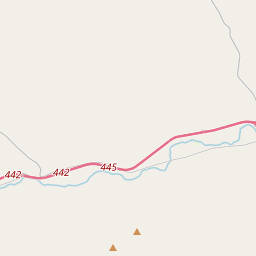Burt M. Fleming American Legion Post No. 237







Organized on May 15, 1919, American Legion Post No. 237 was named for Burt M. Fleming, who was killed in France during World War I. One of the best known organizations in Kimble County, the post sponsored such activities as charity functions, sporting events, celebrations, and conventions. In 1938 the Legion post built its own home of native rock on this site, embedding the interior walls with wartime memorabilia. A new memorial hall was erected following World War II, though the "Legion hut" continued to be used extensively. In 1966 the Legion granted the use of the hut to the county historical museum. (1998)
As one of the most visible programs of the Texas Historical Commission (THC), historical markers commemorate diverse topics in Texas history, including: the history and architecture of houses, commercial and public buildings, religious congregations, and military sites; events that changed the course of local and state history; and individuals who have made lasting contributions to the state, community organizations, and businesses.
Texas was once a part of Mexico but gained independence in 1836 after a famous battle at the Alamo.
The county was officially organized in 1876 and named after George C. Kimble, a famous Texan who fought in the Texas Revolution. During the late 19th and early 20th centuries, Kimble County experienced a period of growth and development. Railroads were built, connecting the county to other parts of Texas, which facilitated the transportation of goods and people.
The discovery of silver and lead in the county drew even more people to the area, resulting in the establishment of several mining communities. For a time, the county was a hub of mining activity, greatly contributing to its economic prosperity. However, as the mining industry declined in the early 20th century, the county shifted its focus to agriculture and ranching.
Today, Kimble County continues to embrace its rural character and agricultural heritage. It is known for its picturesque landscapes, including the beautiful South Llano River State Park. The county's economy is primarily driven by agriculture, including livestock, hunting, and pecan farming. With its combination of natural beauty, historical significance, and thriving rural lifestyle, Kimble County remains a charming part of Texas.
Kimble County Timeline
This timeline provides a condensed summary of the historical journey of Kimble County, Texas.
- 1850: Kimble County is created from parts of Bexar, Gillespie, and Mason counties.
- 1869: The town of Kimbleville is established as the county seat.
- 1873: The name of Kimbleville is changed to Junction City.
- 1882: The town is officially incorporated as Junction City.
- 1894: The name of Junction City is changed to Junction.
- 1901: The Kansas City, Mexico and Orient Railway reaches Junction, leading to an increase in population and economic growth.
- 1927: A devastating flood hits Junction, causing significant damage to the town.
- 1949: The county seat is moved from Junction to its current location in Junction City.
- 2001: The Kimble County Historical Museum opens in Junction to preserve the county's history.